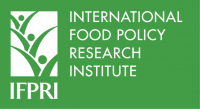
This blog was originally posted on IFPRI.org. It was written by Kelly Jones and Vivian Hoffmann from IFPRI’s Markets, Trade, and Institutions Division as part of an ongoing series of researcher-authored blog stories highlighting research in progress at IFPRI.
Childhood stunting is associated with delays in cognitive development, lower school achievement, and lower earnings in adulthood. In 2009, Demographic and Health Survey (DHS) data showed a 42 percent prevalence of child stunting in the Eastern Province of Kenya —20 percent higher than the Kenyan average, despite the fact that this region had less poverty and lower prevalence of childhood illness than five of the other seven provinces in the country. This suggests factors beyond poverty and illness may be affecting child growth here.
We are currently implementing a randomized-controlled trial to determine whether aflatoxin exposure, which is notoriously high in Eastern Kenya, could be a causal determinant of stunting.
Aflatoxin is a naturally occurring by-product of certain species of the Aspergillus fungi, which can thrive on staple crops such as maize if not properly dried and stored. It is a known carcinogen and can be fatal to humans in large doses. Acute exposure can lead to liver disease, liver failure, and death from aflatoxicosis . Aflatoxin itself is colorless and odorless and can only be detected through specific testing for its presence. Due to high costs, testing in local markets and in maize produced for home consumption is almost non-existent in developing countries.
A growing body of research is highlighting an association between aflatoxin exposure and child linear growth. The hypothesized direct pathway is a biological one: aflatoxin consumption may increase infection by suppressing the immune system or reduce nutrient absorption by changing metabolism. However, given the lack of intervention studies, it is not clear what role is played by aflatoxin, versus other correlated factors such as household socioeconomic status, child illness, and dietary intake.
The Mitigating Aflatoxin Consumption for Improving Child Growth in Eastern Kenya (MAICE) study aims to establish whether a causal relationship between aflatoxin exposure and linear child growth exists, by reducing dietary aflatoxin while holding constant other factors that affect child growth.
The study focuses on children in the last trimester of gestation to age two, as this is the primary period of growth faltering. Throughout 2013 and 2014, the MAICE study enrolled 1829 pregnant women across 56 villages in Meru and Tharaka-Nithi Counties. Halfof these villages were randomly assigned to treatment. Based on our data analysis indicating that nearly all this population’s exposure to aflatoxin occurs through tainted maize, we reduced dietary aflatoxin in the treatment villages by testing and replacing contaminated maize from home stores, and providing certified aflatoxin-safe maize for purchase in a local shop.
Baseline data collection, which included tests for aflatoxin albumin in the blood serum of pregnant mothers, found aflatoxin in the blood of all of tested participants. The levels of exposure were comparable with those observed in other populations for which a strong association between aflatoxin exposure and impaired child growth has been shown.
Based on previous studies, dietary aflatoxin exposure in the treatment group would need to be reduced by at least 35 percent for an impact on child growth to be detectable. This means exposure through maize would need to be reduced by at least 37 percent. Preliminary calculations of impact show that the intervention is achieving a reduction in aflatoxin exposure of 50 percent for the treatment group.
Achieving a reduction in exposure of this size carries significant costs. The intervention involves visiting all 900-plus households in the treatment group every month to perform on-site rapid tests of any stored maize that the household intends to consume in the next two months. Harvested crops testing above the regulatory limit of 10 parts per billion are removed and replaced with aflatoxin-safe maize. Further, because many enrolled households purchase a large share of their consumed maize, since February of 2014 we have stocked a local maize purveyor in each of the 28 treatment villages with certified aflatoxin-safe maize grain and flour for enrolled households to purchase at a price equivalent to the least expensive maize currently sold in the shop.
While this intensive intervention is not replicable at scale, it will provide the first experimental evidence of the impact of aflatoxin exposure on child growth.
Collection of endline data is set to begin next month, and will include growth measurements and blood testing for all traceable children who were in utero at baseline. The study design will allow us to test differences in child growth arising from exposure to aflatoxin, net of socioeconomic and other confounding factors.
Whether or not a relationship is found, the results will have implications for the prioritization of aflatoxin testing and mitigation efforts by governments in affected regions as well as international donors.
